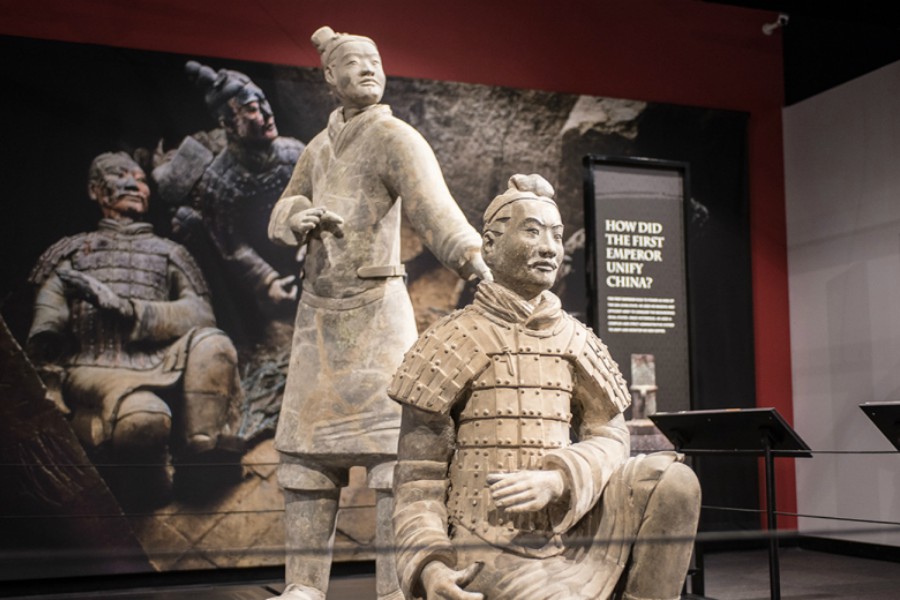Lawsuit: More Than Half of Franklin Institute’s Terracotta Warriors Were Fake
A Pennsylvania woman has filed a $5 million-plus class-action lawsuit against the Philadelphia museum over a recent exhibit.

Terracotta Warriors of the First Emperor | Image courtesy of the Franklin Institute
My family loved the Franklin Institute’s Terracotta Warriors exhibit, which recently closed after a five-month run. The Inquirer called it “ambitious” and “tremendously inventive.” But not everybody was quite so pleased.
A 50-year-old Pennsylvania woman named Chien-Hui Lee has filed a federal class-action lawsuit against the Franklin Institute, alleging that the Terracotta Warriors exhibit and the marketing surrounding it were “deceptive” and “fraudulent.”
In case you missed the exhibit, a brief recap. Back in the mid-1970s, a man in China was digging when he found pieces of terracotta in the ground. It turned out to be a huge archaeological find — thousands of life-sized terracotta statues, buried more than 2,000 years ago to guard the tomb of China’s first emperor.
The problem, according to Lee’s lawsuit, is that most of the statues in the Franklin Institute’s exhibit were actually fakes, or, as museums prefer to refer to them, replicas. (Some press outlets did note the presence of replicas in the exhibit.) And Lee says that she didn’t pay to see replicas, because replicas weren’t what the museum had promised.
The lawsuit alleges that the Franklin Institute’s website didn’t mention replicas. The K-12 education guide that went along with the exhibit didn’t either. Instead, reads the suit, the Franklin Institute “stressed authenticity in its marketing materials” and pushed the “priceless artifacts” angle of the exhibit.
When Lee visited the Terracotta Warriors exhibit, she says that she felt like the statues she was looking at weren’t anywhere near 2,000 years old, so she asked a security guard if the statues in question were authentic. According to the suit, the security guard told her that her suspicions were correct: Those particular statues weren’t the real deal.
The suit further alleges that there was no clear indication of which statues in the exhibit were true artifacts and which were replicas, and that her attorney’s investigation concluded that more than half of the statues were replicas.
“By marketing the exhibit as an exhibit with authentic terracotta warriors, when it was an exhibit largely of replicas of the terracotta warriors, and by showcasing statues in its marketing materials which were either not in the exhibit or which were replicas of the terracotta warriors from China,” reads the suit, “the [Franklin Institute] misled customers about the nature of the experience of surveying the exhibit.”
The suit accuses the museum of fraud and of violating Pennsylvania’s unfair trade practices and consumer protection law. It seeks damages of at least $5 million on behalf of the class, which would be anybody who paid for a ticket to see the exhibit.
I told my daughter about the lawsuit’s allegations, to see what a ten-year-old thinks about all this.
“Well, I would still think that the exhibit was pretty cool,” she offers. “But I would be disappointed.” (She’s not planning on joining the lawsuit, just for the record.)
Lee’s lawyer and the Franklin Institute did not immediately respond to a request for comment.


